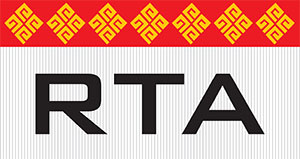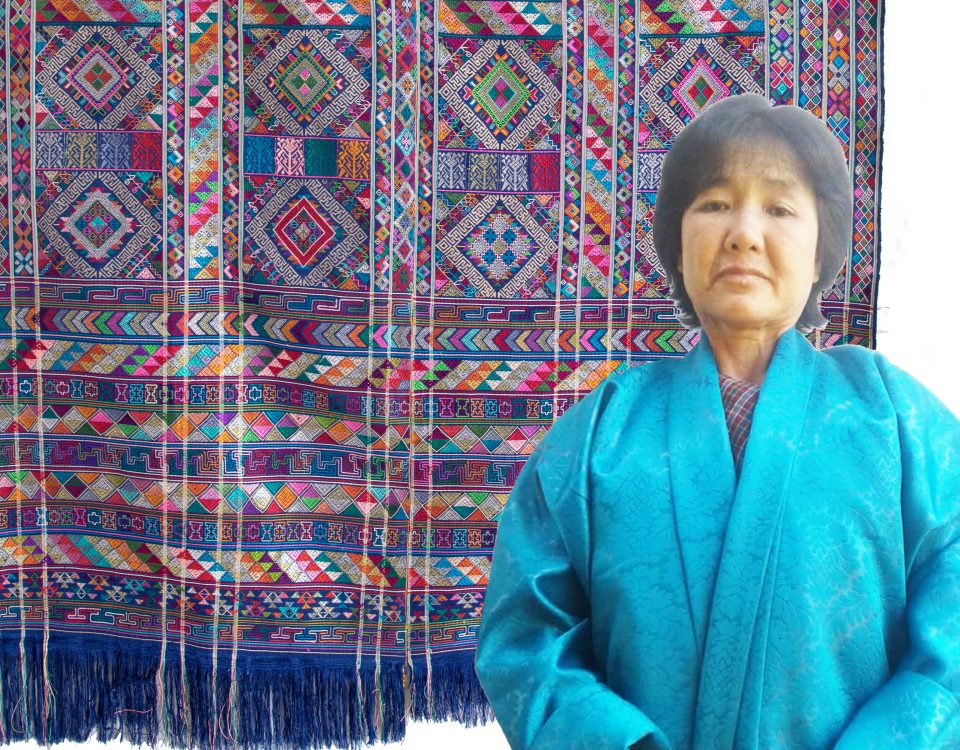Rare royal namzas among exhibits dedicated to Drukgyal Zhipa
Anniversary: A visit to the Royal Textile Academy from June 8 will give visitors a rare glimpse of the exquisite dresses worn by His Majesty the Fourth Druk Gyalpo at historic occasions.
Titled “A Tribute to His Majesty Drukgyal Zhipa” to commemorate His Majesty’s 60th birth anniversary, the exhibits include the lungserma shinglochem gho (silk) that His Majesty the Fourth Druk Gyalpo wore during the coronation ceremony in 1974 at Tashichhodzong and Changlimithang, the silk mentse martha that was worn at the Trongsa Penlop investiture ceremony in Trongsa, and the goechen (brocade) namza (dresses) that His Majesty wore at the royal wedding ceremony in Punakha in 1988.
His Majesty the Fourth Druk Gyalpo inaugurated the exhibition yesterday.
Their Majesties the Queen Mothers, members of the royal family, cabinet ministers and government officials attended the inaugural ceremony.
Organised by the Textile Museum of Bhutan, the exhibition showcases His Majesty the Fourth Druk Gyalpo’s namzas that he wore at various occasions, photographs and other memorabilia of His Majesty.
The royal wedding attires and crowns of Their Majesties the Queen Mothers, Dorji Wangmo Wangchuck, Tshering Pem Wangchuck, Tshering Yangdon Wangchuck and Sangay Choden Wangchuck are also on display.
A special exhibit is the Raven Crown, Uzham Jharo Dongchen, that belonged to Jigme Namgyal (1825-1926), father of the first king Gongsar Ugyen Wangchuck. It is the original version of the Raven Crown, and was conceived more as a magical battle helmet than a symbol of royalty.
Lama Jangchub Tsendru designed and consecrated the headgear as Jigme Namgyal’s special symbol and bequest to his successive heirs. The victories, which Jigme Namgyal won over his rivals in Bhutan, and his success against the British in 1865, are still ascribed to its power.
Initiated by the patronage of the Textile Museum and Royal Textile Academy of Bhutan, Her Majesty the Queen Mother Sangay Choden Wangchuck, the exhibition also attempts to narrate the journey of His Majesty Jigme Singye Wangchuck from His Majesty’s auspicious birth through his reign until his abdication on December 14, 2006.
A press release from the academy states that His Majesty Jigme Singye Wangchuck is the realisation of a religious prophecy that foretold the birth of a sacred reincarnation destined for greatness. “Terton Drukdra Dorji, a great Buddhist luminary in the 18th century, prophesied the birth and life of His Majesty, including the unprecedented growth of Bhutan as a nation under his reign,” the press release stated.
Prophecy of Terton Drukdra Dorji
“Dear son, listen to me once again, In the hidden lowland of the southern country (Bhutan) Where three valleys merge in a beautiful place called Womtrong, (old name for Dechencholing) In that sacred place, in the Female Wood Sheep Year (1955), A boy of unsurpassed character will be born. He will ascend the Golden Throne at the age of 20 (His Majesty’s lunar calendar age) And take his country to the greatest heights of success unopposed. The sentient beings in that land will enjoy unprecedented peace and prosperity”.
Terton Drukdra Dorji’s prophecy, which was reproduced from a manuscript from the National Library of Bhutan, is also on display. It stated that, when Terton Drukdra Dorji was in deep meditation in the mountains between Bhutan and Tibet, Guru Rinpoche appeared in person before him and spoke of this prophecy.
His Majesty was born in Dechencholing Palace on November 11, 1955 and was officially enthroned as the Fourth Druk Gyalpo on June 2, 1974, becoming the youngest monarch in the world at the age of 17 years.
“The exhibition aspires to honour and celebrate the life of an extraordinary monarch,” the press release stated.
Source: Kuensel






